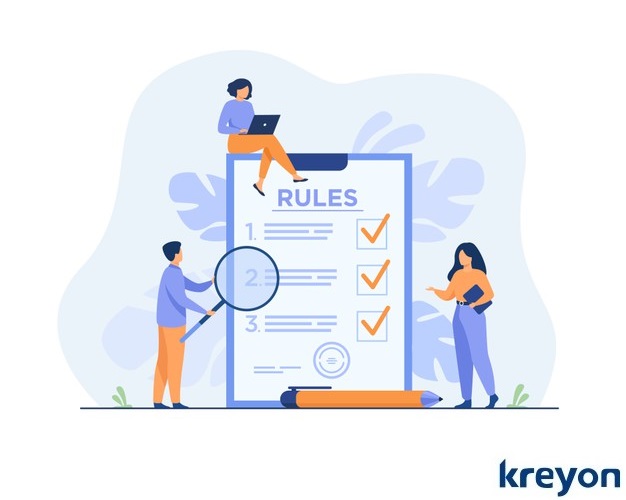5 Powerful Management Accounting Techniques for Improved Business Insights

Management accounting techniques help a business understand its patterns like no other tool. The deep analysis of numbers for activities, revenue generated, cost of goods sold and other operational aspects is often an eye opener for management. The increasing use of machine learning and AI for management accounting is helping businesses turn a new leaf in their business.
The business insights are driven by real-time data that helps with the allocation, utilisation and optimisation of the resources. The different management accounting techniques give various points of analysis for a business. Oftentimes, companies need different mental models to solve business problems & in a similar vein data crunching with different management accounting techniques can provide more perspectives on data. Here’s a look at how the management accounting techniques and automation can be used for churning out plausible business insights:
1. Activity Based Costing
The ABC costing model is an accounting method that assigns costs to activities based on the resources used. The direct and indirect costs are calculated based on activities. The activity costs are analysed for various projects, products and services to understand their profitability etc.
For product development, the ABC model would work in the following manner:
i) Identify all activities related for the product.
ii) Create various activities for the product costs. For e.g. Development, Testing, Design, Marketing, Sales, Advertisements, Promotion, Support & Infrastructure, Customer Helpdesk etc.
iii) The overall costs above are divided by the resources spent. For e.g. total development costs $250,000. The total number of hours spent for development are 1250, then the development cost would be $20 per hour. Now, if a project requires 500 development hours, then the cost for the project would be $20*500=$10,000
iv) For any product or service, the overall costing can be arrived at and the total revenue can then be used for estimating the profitability.
2. Time Value of Money

The time value of money can be utilised for improving its cashflows. When you send an invoice to a customer, businesses can offer discounts for making yearly payments. The time value of money received in the present is worth more than the same amount received in the future.
The time value of money is also known as the net present value of money. Companies that understand the impact of time value can use it for launching discounts, yearly payment offerings, and prepayment offers to their customers. The invoicing system, vendor contracts and other suppliers etc. can be offered incentives which help the company maximise its current cashflow.
The software algorithms can offer insights to management based on the payments owed and due for its business. The optimum discount rates can be provided after drilling into the numbers.
It turns out that $1,000 now or $1,100 after one year have the same value at 10% interest rate compounded annually. So, a business can offer discounts of upto $100, when it is able to earn more than 10% interest.
FV = future value of money
PV = present value of money
i = interest rate or return rate earned on money
t = number of years to get the return
n = number of compounding periods of interest per year
FV = $1,000 x (1 + (10% / 1) ^ (1 x 1) = $1,100
3. Rate of Return
The rate of return is an effective tool for spending resources of an organisation with efficiency. It evaluates the return of a business from its investments for a period of time. The net gain or loss is expressed as a percentage of the initial cost of investment. The percent change from beginning if the investment to the current time is noted for calculating the rate of return.
The rate of return can be analysed for various projects, asset investments and products/services in a business. All activities can be ranked according to the ROR. For e.g. consider a business spends $100,000 for a buying an asset. If the value of the asset after 3 years turns out to be $150,000 then the rate of return will be 50% in 3 years. Organisations can rank various activities and track their rate of returns with respect to their business.
Some projects, assets investments and other developments may lose money for a business. In that case, the rate of return will be negative for them. With automation, companies can get detailed forecasting on the expected returns from various activities for their business.
4. Theory of Constraints

Theory of constraints is a management accounting technique that examines the constraints that hold an organisation back. It helps a company understand the constraints that hold an organisation from reaching its goal. The constraint is the limiting factors that is also referred to as a bottleneck.
The five steps involved in TOC are as follows:
i) Identify: Identify the most important constraint that limits the goal.
ii) Exploit: Make quick improvements and changes to overcome the constraint for reaching your goal.
iii) Subordinate: Review the activities and processes to ensure they are aligned with & support the constraint.
iv) Elevate: If the constraint still persists or has not moved, consider what needs to be changed. What should it be changed to and what actions will cause the change. In some cases, it could involve additional capital/resources.
v) Repeat: Implementation of TOC is an ongoing and continuous improvement cycle. When one constraint is eliminated, the next one should be addressed. Organisations that value continual improvement can adopt this system to successfully keep reinventing themselves.
When it comes to accounting goals, whether it is related to revenue, expenses, profitability, sales, payables, receivables etc. TOC can be used for identifying constraints. It can provide systematic evaluation of the most prominent constraints that prevent the organisation from reaching its goals. It could also look at the processes, identify the bottlenecks and work to mitigate them continuously.
5. Throughput Accounting
Throughput accounting is used by organisations to eliminate the traditional accounting hurdles for reaching long-term profitability. For e.g. in traditional accounting inventory is an asset. It could be converted to cash equivalent, however reality may be different. The inventory value may have declined overtime & it may not be converted easily to cash when the organisation needs it.
Also, consider the fact that expenses are needed for long term income and profitability. These expenses could be related to employees, assets or office. In the traditional sense, expense is considered as a constraint and should be reduced as much as possible. But practically, it should be used for increasing the revenue & profitability. In other words, the throughput accounting measures things based on the output also known as the throughput. It takes the following into consideration:
Throughput : The rate at which sales are generated after deducting the variable costs(raw materials, commissions, freight etc.)
Investment: Money that is spent on things like physical things like inventory, machinery and equipment, fixed assets, etc.
Expenses: Money spent to generate the throughput. This doesn’t include the variable costs. It includes payroll, employee expenses, utilities, taxes etc.
Net Profit = Throughput − Operating Expenses
Return on Investment = Net Profit / Investment
Productivity = Throughput / Operating Expenses
Investment Turns = Throughput / Investment
The throughput accounting method focuses more on generating higher throughput than cutting expenses. It relies more on building sales and throughput for an organisation.
These management accounting techniques can help companies to analyse their data & get insights to improve their operations.
